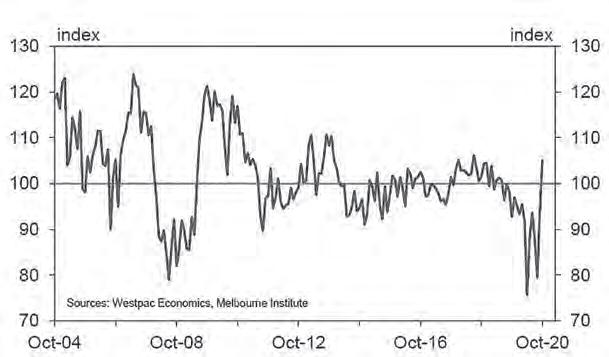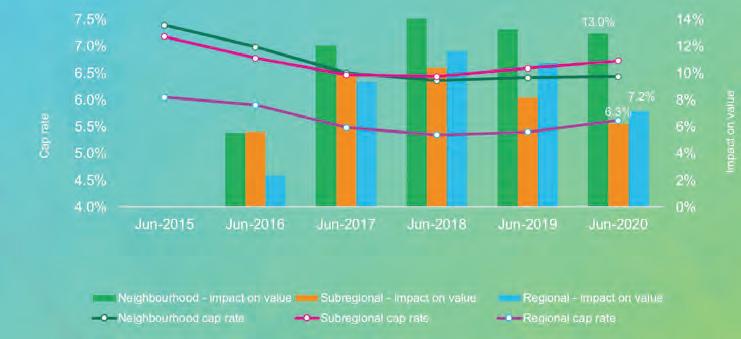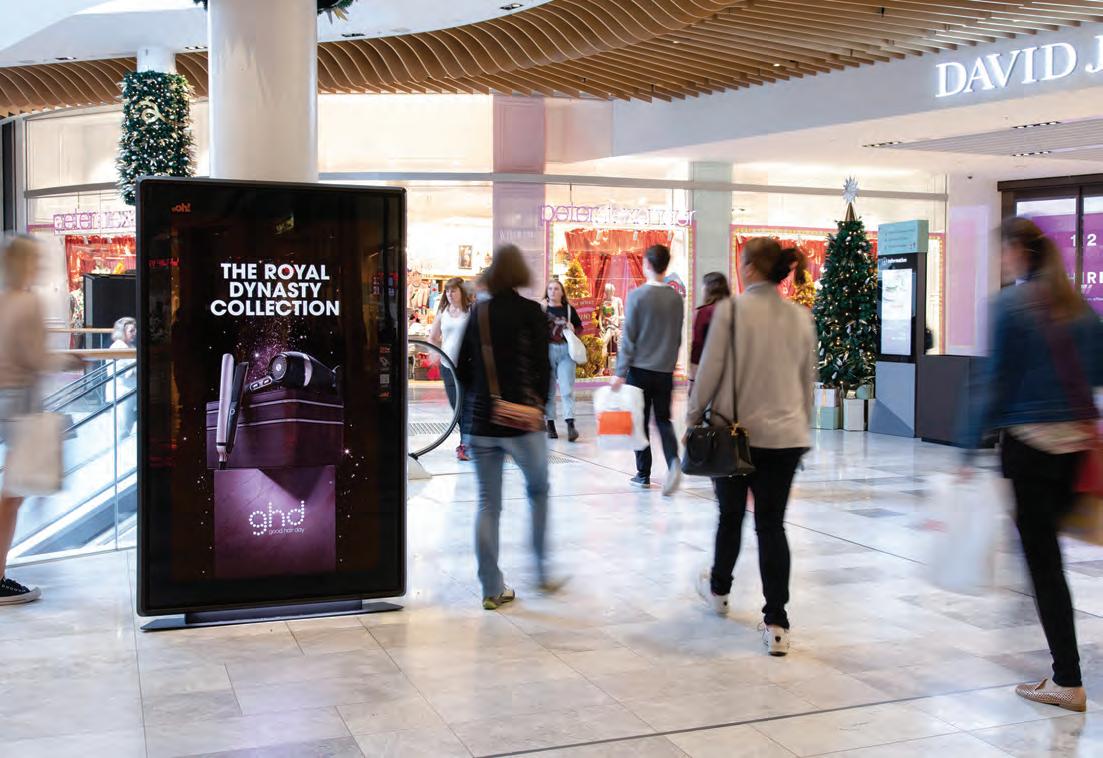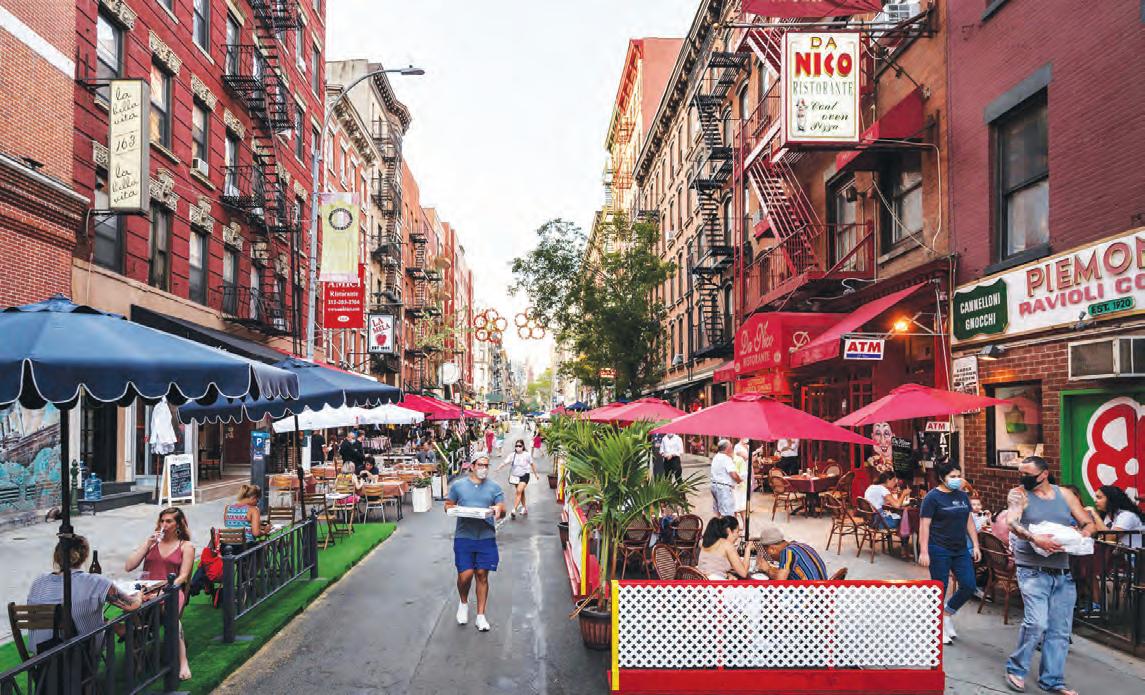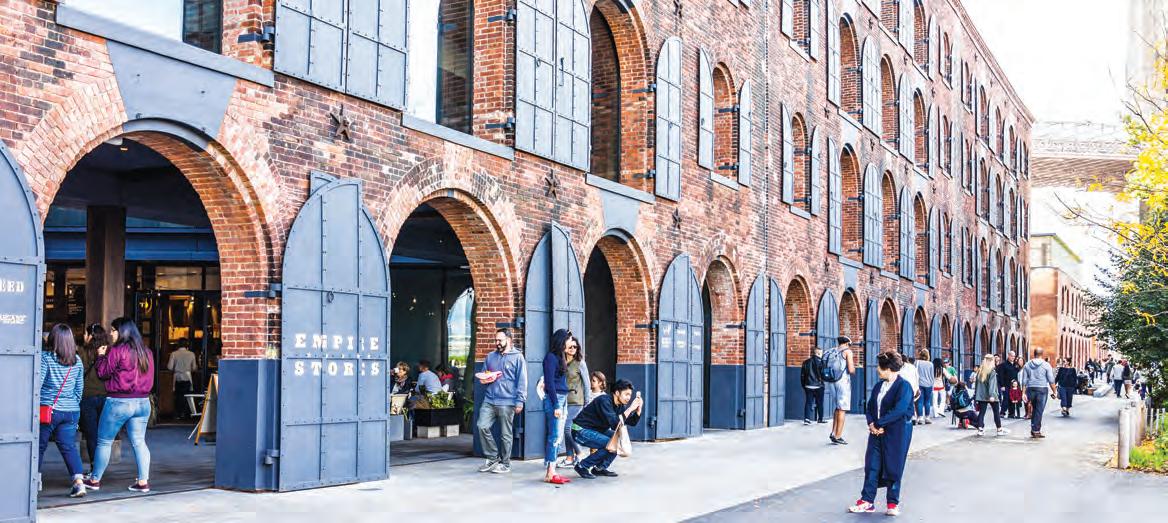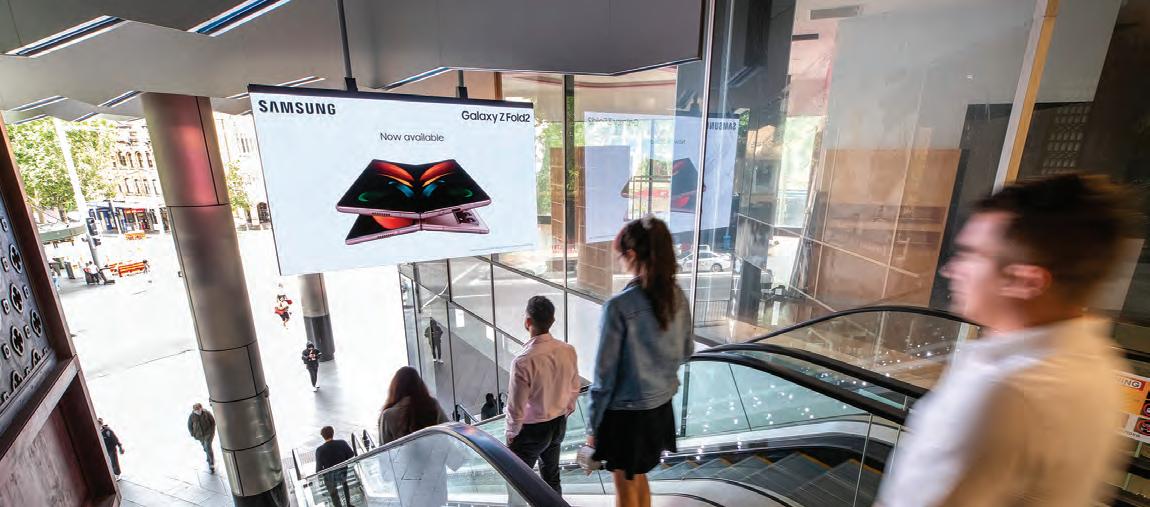
11 minute read
Food: How to maximise food and hospitality sales opportunities in a 1.5m economy
FOOD FOCUS
COVID-19 has affected the hospitality industry massively. F&B outlets, whether take-away cafés or Michelin star restaurants, have all been savaged by closure, restrictions in operations or huge reductions in capacity. Francis Loughran believes a move to alfresco eating and drinking will be a way of the future.
Advertisement
EXPERIENCE THE INSIDE OUTSIDE –How to maximise food and hospitality sales opportunities in a 1.5m economy
With no finishing line in sight for COVID-19 and with the food and beverage (F&B) industry haemorrhaging, outdoor dining and drinking is one new acceptable way forward for F&B across all industry sectors to kickstart recovery. Across the world, from Dubai to Denver, alfresco dining is the new-normal and is the easiest way to reassure customers of a level of safety. From picnics to Pop Ups, and tents to terraces, the outdoors is the new indoors.
From Shopping Centres to RSL Clubs, safety and emotional wellbeing will be the number one consideration for people, especially the older demographic. Across Australia and the world, cleanliness and hygiene will play a greater role in securing business as discerning customers slowly, but surely, venture back to their local and favourite cafés, bars and restaurants. As ever, sales is the Igloo Domes, Melbourne (Image: Timeout) only vehicle to save food operators and pay rents. beverage spaces. These creative
We all know that food and hospitality outdoor environments aim to do one is one of life’s pleasures and while thing – drive sales – and thereby secure eating is enjoyable, it is even more customers to save small and medium enjoyable if we eat outdoors. With this businesses operating in a 1.5m economy. in mind, F&B operators around the However, it cannot be left to operators world have focused their creative alone to make their own venues safe. energy to developing a range of safe The reason why cafés and restaurants and comfortable alfresco food and weren’t able to open up as early as they FRANCIS LOUGHRAN Managing Director Future Food
would have liked post-lockdown is that these venues do not operate in a vacuum – they are, in one form or another, part of a precinct. It is this holistic environment that also has to change and the owners and overall stakeholders must accept their role in creating the ‘next-normal’. Not only will malls, airports, cinemas and clubs
Craft, Birmingham (Image: Design my night) have to demonstrate and visually communicate cleanliness and hygiene at their cost, but complete suburbs and precincts must also ensure that they communicate confidence to potential customers.
Without this overarching and comprehensive commitment to the post-COVID world from mall owners, local and state governments and individual landlords, F&B operators will have difficulty in regaining their vibrancy and their profitability. In addition to increased safety measures and the newfound scrutiny of wages, F&B businesses must also contend with reduced internal seating numbers, increased technology costs (QR codes) and restricted trading hours.
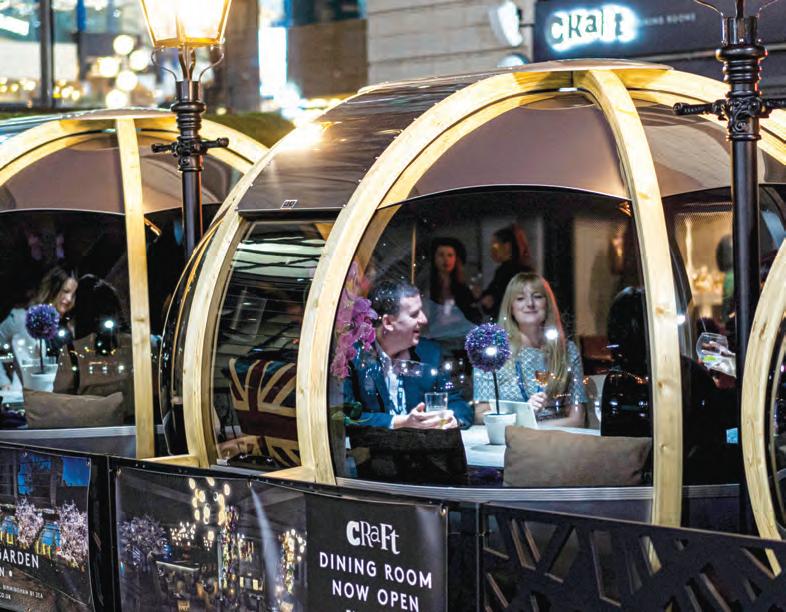
Toronto (Image: Daniel Lipton)
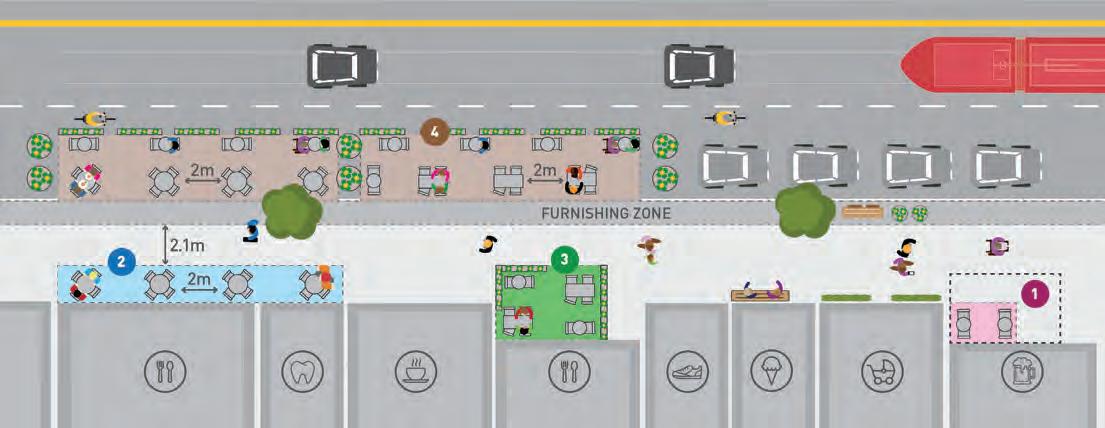
Igloo Domes, Melbourne (Image: The Wharf Hotel) The imperative for mall owners to act has never been stronger. Their tenants’ turnover is at stake and, therefore, so is their own revenue. While smaller neighbourhood and sub-regional malls have both an external focus and a lower reliance on F&B for their income, all malls have to do more to provide a precinct-wide commitment to the next-normal and one of the best proven ways to do so is to take the inside outside.
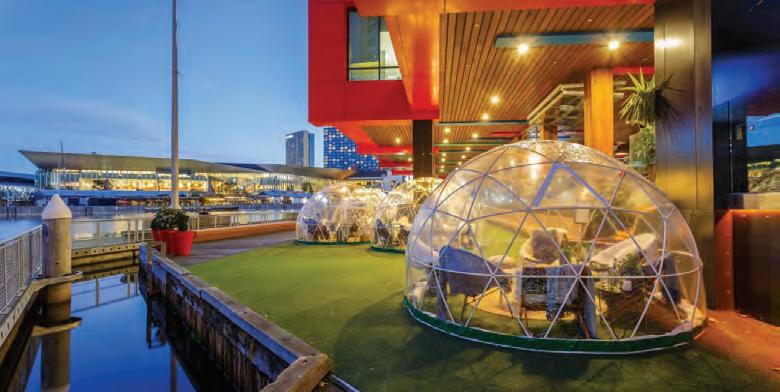
Christchurch Harbour Hotel (image: Diazhub)
The economics of dining in the 1.5m economy means that operators need the extra space that outdoor dining can provide. The required internal restrictions have meant that many venues are either trying to make up for lost time and revenue, or they have fixed costs that must be spread over fewer covers or both. Whatever the case, the price of dining is too high – dishes are now being priced at $50 that at the beginning of the year were $35. This is lousy value for money and is not sustainable. Customers will pay for the initial buzz of eating out, but with incomes being significantly affected during the past six months, there is a heightened need for F&B outlets to provide value for money – it is the only way that operators can get back to a sustainable business model.
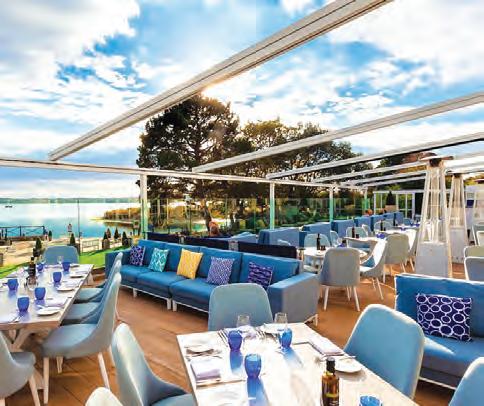
The post-COVID world is going to be design-led
In conversations with property owners, we are asked often: how is it possible to have alfresco dining in a place like Melbourne? The answer, of course, is that – with the right design – anything is possible. Too many people think that alfresco dining is about putting a table and a couple of chairs outside and then hoping that the wind doesn’t blow things away. This is looking at the issue with a static and onedimensional point of view. Alfresco is not just for the beach.
We have done considerable work in looking at both pre-COVID and current solutions to dining outside. The domes that have popped up are but one solution, but they're not necessarily a good match with good hospitality and hygiene. Moreover, diners don’t want to keep themselves cocooned from the Outdoor dining in Rome (Image: The Telegraph)

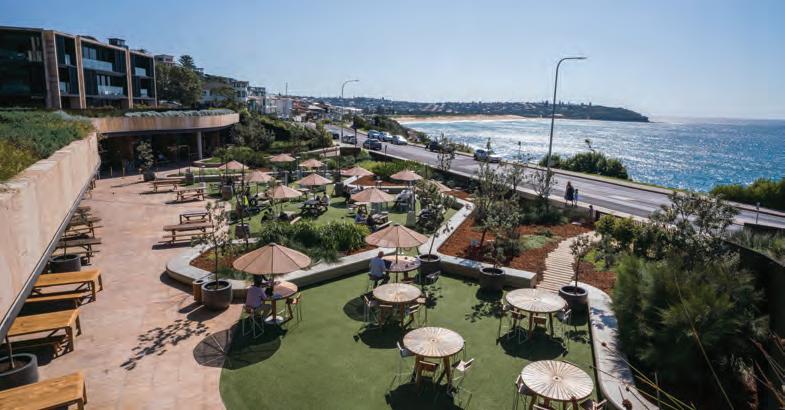
elements. There are all-year venues in Chicago, Toronto and London – none of whom are renowned for their balmy yearround climates. Parisian cafés stay open all year and adapt to conditions by providing blankets to their patrons. There are starred, outdoor restaurants mid-mountain in ski areas throughout Switzerland, France and Colorado.
The next-normal business of food is all about re-building sales, so that rents and operating costs can be paid. Government support for small business will continue to be reduced, so it is all about the individual business identifying an opportunity that they can capitalise upon. Victoria’s second lockdown limited all F&B operations to takeaway only; this, coupled with a prolonged shutdown has compounded the problem of many smaller food businesses not reopening due to a number of factors, including cash flow and the lack of ability to make the changes required to pivot to new product and service platforms.
Eating outside presents venues with Harbord Diggers (Image: Harbord Diggers) challenges, but the creativity that has been shown by the hospitality industry has got to be matched by local governments and landlords everywhere. Some examples of recent initiatives that have rethought operations of all sizes and their relationship with the public realm are in Domaine Road, South Yarra. Entrecote, The Botanical Hotel and Gilson took full advantage of their street frontage and proximity to the Botanical Gardens complete with green grass, a mature tree canopy and wideopen spaces less than ten metres from their front door. A simple picnic menu, complete with a table and two chairs per booking delivered an instant outdoor restaurant, but as a takeaway – no wait staff, no service costs and a welcome relief for lockdown weary Melburnians.
The simple concept of ‘alfresco dining storefront’ has been rolled out across Melbourne’s parks, nature strips and domains. They are visually eye catching to passers-by. One obvious advantage of the alfresco spaces is to communicate

Four Seasons Doha (Image: Rose Travel)
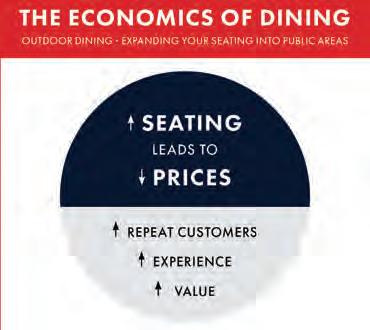
Recess Chicago (Image: Choose Chicago)
the message: we are open for business, we welcome you back and it is a pleasant and much more enjoyable experience than ordering take-away. People are social animals and we yearn for social connections, whether it be at our local pub, café or a private club on Bondi Beach.
Shopping centres large and small need to work closely with and lead their F&B operators so as to rethink their approach to welcoming customers back. Again, this is going to be a design-led recovery, because hoping for a return to pre-COVID habits is not going to happen soon enough for many operators to stay in business. A recent McKinsey survey of US consumers found that 80% of respondents were anxious about dining inside F&B outlets. The survey went deeper to discern the issues that caused the most concern. The not surprising conclusions were that consumers feared being in close proximity to other patrons while dining and while entering and exiting the building.

Reducing seating is certainly one way of addressing these concerns, but, by itself, this solution only puts considerable strain on a venue’s operations and profits. The best and fastest way to increase seating safely is to expand outside of the four walls.
From Pop Ups to picnics – fresh ideas in the fresh air
Across the globe, as well as in Australia and New Zealand, food and hospitality has moved outdoors in varying degrees and will continue to do so in the future as developers, owners and property managers find ways to offer their customers an alfresco option, one that is safe and capable of generating sales and re-connection with their beloved customers.
Pop Up venues include Pop Up food stalls, food trucks, open air cinemas, cafés, restaurants, BBQs/sausage sizzles, farmers’ markets, rooftop bars, wine stalls and small event spaces, as well as open-air fashion, jewellery and dry retail stalls etc. Kerb-side dining, car park space dining, gardens and plazas, and laneways are ‘in’, because they’re ‘out’.
The keys to success in pivoting to an alfresco offer are the design of the space and the fact that operators and landlords can’t just set and forget. In terms of design, the spaces do not have to be glitzy, just practical. Weather-proofing is, and always has been, the key element of any outdoor dining space.
The other key is that someone needs to take control of the outdoors. Just setting up an umbrella and a few tables is not enough: They must be managed in relation to noise, litter, food scraps, closing time, and considerations for neighbours. Bad experiences will quickly kill sales and defeat the objective.
In Vilnius, the capital of Lithuania and one of the first cities to embrace F&B venues to expand on to the street, their experience has shown that an active – not passive – management of the outdoor areas is necessary. The reports from Vilnius show that physical distancing was hard to maintain, which was exacerbated by a lack of government planning and communication.
In Manhattan, the local authorities were often extremely strict about venues following all regulations about their outdoor spaces. Now, New York City recognises the benefits that accrue to restaurants, their patrons and the city, and are taking a more holistic view of operations.
Furthermore, cities such as New York, Rome, Montreal and Tel Aviv have implemented a pedestrianisation policy that is proving very successful. While most Australian suburbs and cities are not as densely packed as these three metropolitan areas, the lessons are completely transferable: Outdoor dining works, and more is better than less.
COVID-19 has brought forward significant changes to the hospitality industry. Some of the learnings that we can take from this pandemic can be of significant value to the industry. Coupled with an inevitable purge of food and hospitality operators (for a number of reasons) provides good forward-thinking operators and developers with an optimistic future, if it can be strategically considered and executed to the highest standard. For example, we have seen an almost ubiquitous acceptance of cashless operations across most businesses. For years, ‘cash-only
Parklet (Image: Projects for Public Spaces)

Outdoor dining, Vilnius (Image: Vilnius)

operators’ have provided the industry with a negative connotation; yet almost overnight this problem has disappeared. Alfresco dining is another, and it is time that we embrace what the Europeans have been doing for well over a century.
There is another reason for property owners to take the lead in helping their F&B tenants bring the inside outside. If F&B tenants aren’t given the scope to expand outside of their box, then they will have to rethink their operations and, more importantly, rethink their need for space and the type of space that they require. McKinsey again has delved into this area and its conclusions are sobering:
A very high proportion [of food operators] are planning changes to their restaurant layouts for the long term. So we’re expecting that – because even if we got to a post-COVID-19 world where people don’t have the same level of anxiety about dining in, I think we’ll see stickiness of drive-through, stickiness of carryout, stickiness of delivery. That has implications on the size of the indoor space that you need. We already saw that with Starbucks, for example: they’ve announced pickup-only locations, particularly in high-traffic urban places where they get a lot of foot traffic anyway.
In our lifetime, it has never been more crucial that food and hospitality operators maximise sales by being ultracreative and applying the first principles of hospitality. Image is everything when it comes to communicating safety and cleanliness as a means to attract customers and to maximise spend.
COVID-19 has also changed the ‘value’ system of customers, so food and hospitality operators need to work even harder to secure spend and repeat patronage. And let’s not forget about jobs, it’s ‘profit for purpose’, to create badly needed jobs across Australia.
Throughout history, as a result of disasters and their aftermath, people have always turned to food, friends and social gatherings to make them feel secure. The goal now for all food operators is all about people making people feel welcome, safe and relaxed to spend time and money and to return time and time again. SCN

